The most popular types of wheat groats with photos and names
If bread is the head of everything, then wheat is the neck on which this head rests. But the golden grain crop is included in the human diet not only in the composition of flour products. A large number of cereals are made from it. Many of them are popular, and some have been undeservedly forgotten.
The content of the article
What cereals are made from wheat: types and names
Wheat groats have been used as an independent dish for a long time. They ate delicate and nutritious cereals for breakfast, lunch and dinner. Then they began to be used as a side dish for meat and fish. Since then, little has changed, except that the range of cereals has increased significantly.
In the photo - wheat groats.
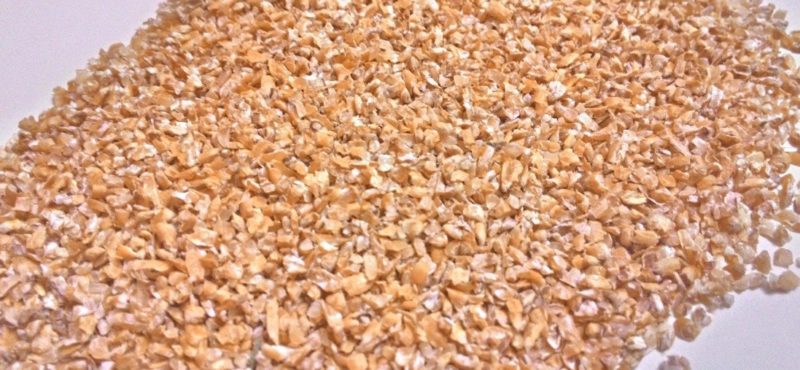
The benefits of wheat groats:
- regulate the digestion process due to the high fiber content, which stimulates intestinal motility;
- with regular use, due to its rich chemical composition, they stimulate and strengthen the immune system;
- replenish the supply of vitamins and minerals;
- have a beneficial effect on the condition of the skin, hair and bones;
- well suited for dietary nutrition, easy to digest.
Artek

Wheat groats Artek in Russia are produced in accordance with GOST 276-60 from durum wheat (durum). These are finely crushed grains wheat, which completely free from the embryo and partially from the seed and fruit membranes. After that, the grains are ground. There are subspecies of cereals, which depend on the size of the particles and their shape. They are all characterized by a yellow color and a wheat aroma without notes of mustiness and mold. The taste is mild, without bitter or sour undertones.
How to make cereals from wheat:
- Wheat grains are cleaned using separators. All mineral impurities are removed in the 3-stage cleaning process.
- After that, the wheat is slightly moistened and kept in this state from 30 minutes to 2 hours.
- Then the films and the germ are removed by means of rolling machines.
- Carry out grinding.
- Further, grain is milled and sifted. At this stage, the resulting particles are sorted by size.
- If the particle diameter exceeds the norm, they are additionally polished.
- At the last stage, the groats are checked for metal-magnetic impurities.
Energy and nutritional value per 100 g of dry product:
- proteins - 11-11.5 g;
- fats - 1.2-1.3 g;
- carbohydrates - 68-68.5 g;
- calorie content - 330 kcal.
The indicators are the same for both Artek and Poltava (No. 1-4), since they are produced from the same raw materials. The differences are only in the degree of grinding.
Poltava
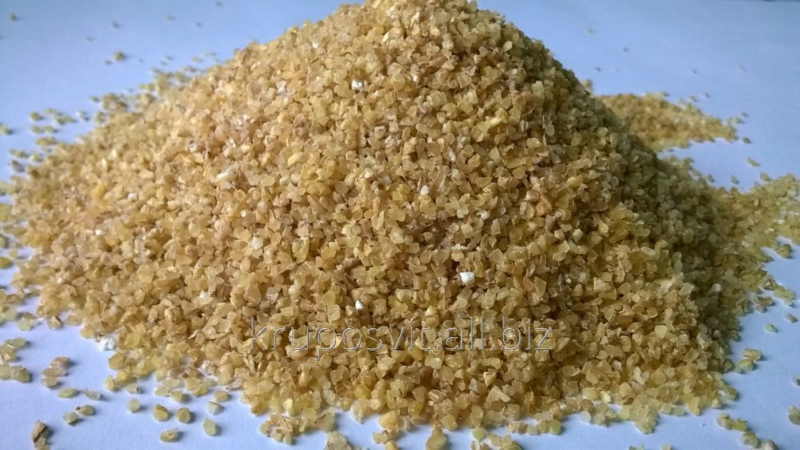
Poltava groats are also produced from durum wheat and varies in particle size:
- # 1. The embryo is completely removed from the species, and the seed and fruit membranes are partially removed. The grain is sanded, elongated with rounded ends. Such cereals are well suited for preparing side dishes and soups.
- # 2. Medium sized particles, free from the embryo, are oval in shape with rounded edges. It is used for cooking soups and as a side dish for meat and fish dishes.
- Number 3. Smaller particle size than No. 2, with polished edges, yellow or gray-yellow colors. Cereals No. 3 and No. 4 are used exclusively for cooking cereals.
- No. 4. The smallest grains remaining in the sorting process. They are also polished. The particles are yellowish with gray patches.
Arnautka
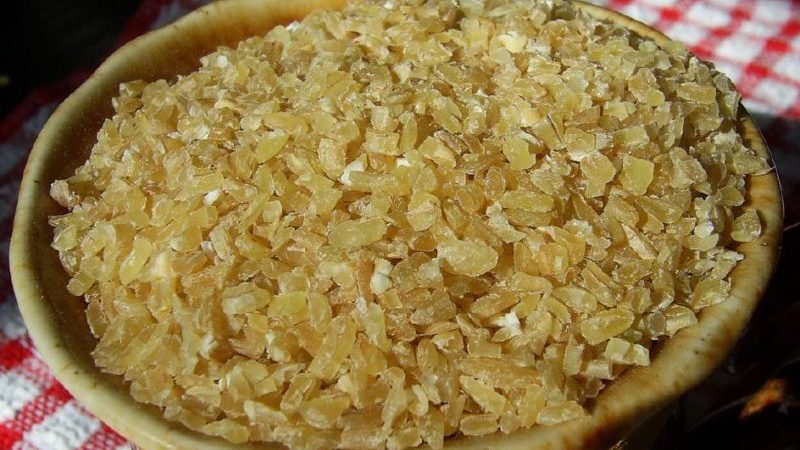
This cereal has another name - arnovka. It is made from durum wheat (spring vitreous is used) by crushing the grains cleaned from the germ and shells and their further grinding.In appearance, the croup is yellowish or translucent, with a barely noticeable shine. Has a characteristic wheat smell. Arnautka is used when preparing porridge and first courses.
Energy and nutritional value of Arnautka:
- proteins - 13.8 g;
- fats - 1.2;
- carbohydrates - 68.5 g;
- calorie content - 318 kcal.
Bulgur
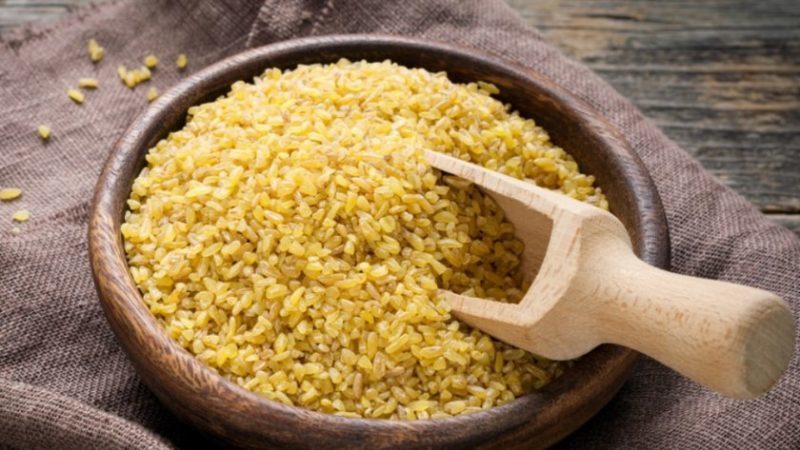
Bulgur (or bulgor) groats are very popular in the countries of the East. It is made from durum wheat. The grains are steamed, dried and cleaned from bran, and then crushed.
There are several varieties of bulgur, which depend on the size of the crushed grains. The largest varieties (coarse) are used for making soups and hot dishes, medium (medium) - for salads and cold dishes, small (fine) - for baking.
The groats have a beautiful golden hue, with a delicate nutty flavor (reminiscent of hazelnuts). When cooking, it practically does not boil over and remains crumbly. Adherents of a healthy diet highly value bulgur for its beneficial properties:
- relieves inflammation in the body;
- reduces the risk of cancer;
- serves as a source of minerals;
- reduces the risk of asthma in children;
- normalizes bowel function.
Thanks to the steam treatment, bulgur does not need to be rinsed. To maximize the taste of the cereal, it is heated a little in a pan with the addition of a small amount of butter until a nutty aroma appears.
In cooking, this type of crushed wheat is widely used. Bulgur is used as a side dish for meat and fish dishes, it is stuffed with vegetables and complements salads.
Energy and nutritional value of bulgur:
- proteins - 15 g;
- fats - 1.5 g;
- carbohydrates - 75 g;
- calorie content - 340-360 kcal.
Wheat flakes
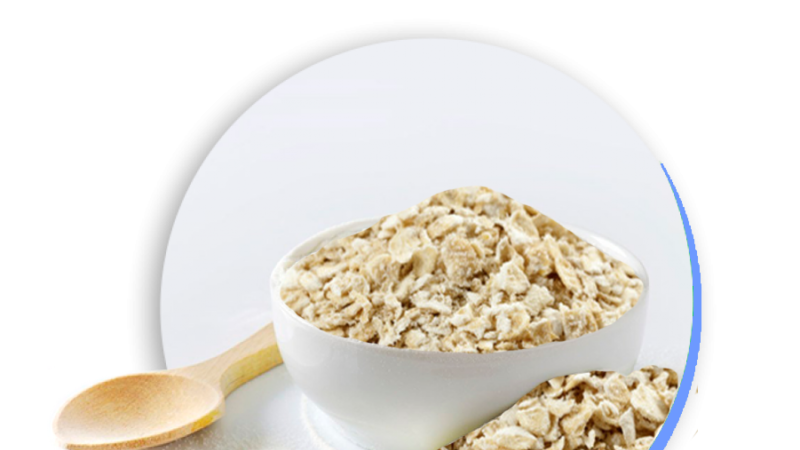
Wheat flakes are a cereal product made from premium durum wheat. During production, raw materials go through several stages of preparation:
- Whole grains are cleaned of dust and husks.
- After that, the raw material is washed and dried several times.
- The grain is put under a press and flattened until thin flakes are formed.
The resulting golden flakes are steamed. Some species are not made from whole grains, but from wheat groats. Depending on the raw materials and the degree of steaming, wheat flakes are divided into 2 subspecies: those that need to be heat treated and those that do not need cooking.
It is enough to pour the latter with hot water or milk and let it brew. This is a great breakfast option that has a beneficial effect on the digestive system and provides energy for the whole day thanks to its high carbohydrate content.
Energy and nutritional value of wheat flakes:
- proteins - 16 g;
- fats - 1 g;
- carbohydrates - 70 g;
- calorie content - 335 kcal.
Couscous
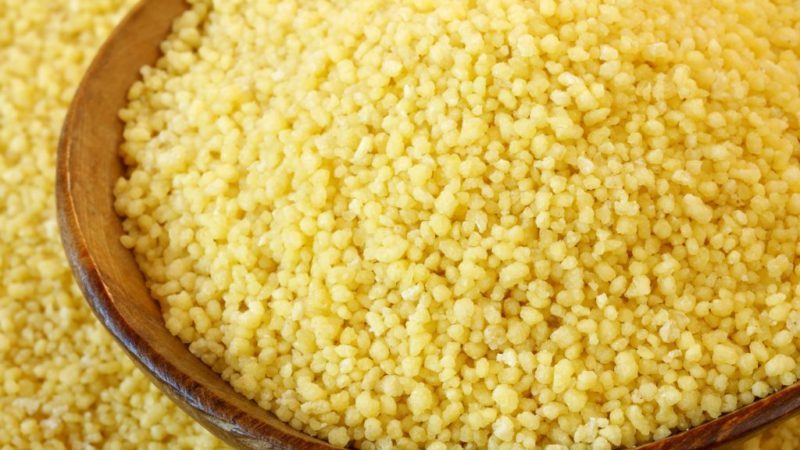
The basis of modern couscous is semolina made from wheat. It is sprayed with salt water and rolled into tiny balls, which are then sprinkled with flour or semolina and passed through a sieve for sorting. The grain size varies from 0.5 to 2 mm. The resulting particles are pale yellow in color, with a slightly salty taste.
Couscous differs from other wheat cereals not only in the way it is obtained. It must be cooked exclusively for steam. After that, the couscous is poured with boiling water or hot broth and insisted under a hot lid.
Nutritional and energy value:
- proteins - 12.8 g;
- fats - 0.6 g;
- carbohydrates - 77.5 g;
- calorie content - 376 kcal.
Spelled
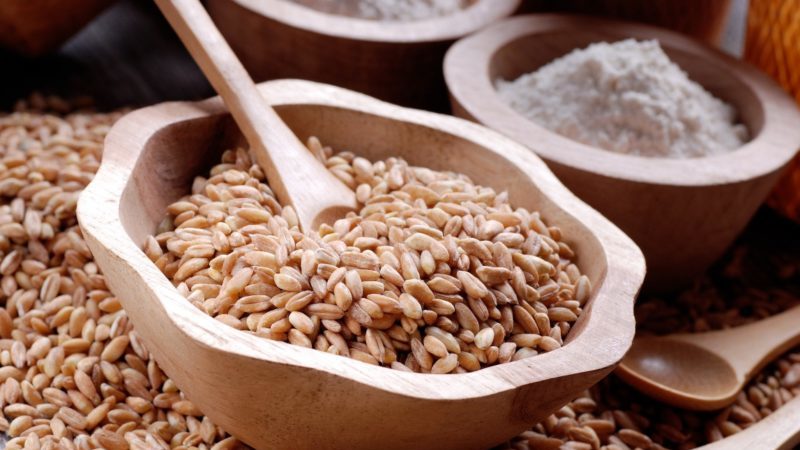
Spelled is a grain product obtained from a special type of wheat - emmer, or two-grain wheat. It is simple to make cereals: the grains are washed, cleaned from films as much as possible and either crushed or immediately sorted into packages.
Attention! In stores, you can most often find crushed spelled, but the greatest value for the human body is whole grain cereals.
Spelled in Russia became widespread in the 19th century, but over time, its beneficial properties were forgotten. Nowadays, this cereal can be found mainly only in health food stores.It is perfect for breakfast - the spelled porridge tastes tender and very satisfying. The high fiber content regulates bowel function and has a beneficial effect on the entire body as a whole.
Nutritional and energy value of spelled:
- proteins - 14.5 g;
- fats - 2.4 g;
- carbohydrates - 70 g;
- calorie content - 338 kcal.
What other foods are obtained from wheat
Not only cereals are obtained from wheat grains, but also other valuable products.
Semolina

The semolina, unloved by everyone (or beloved) since childhood, is made simultaneously with the grinding of wheat into flour. These are large particles of crushed endosperm. In Russia, semolina production is controlled by GOST 7022-97. According to him, cereals are divided into the following types:
- M - from soft wheat, cream or white, without particle transparency;
- MT - from soft wheat (with the addition of durum in an amount of up to 20% of the total mass), translucent;
- T - exclusively from durum, yellowish and translucent.
In addition to making cereals, semolina is used in casseroles and baked goods.
Reference. Durum is a durum wheat variety that is high in fiber and gluten.
Flour

The most valuable wheat product is flour. Bread and similar products are baked from it, added to various dishes and sauces. Bread flour is made from soft wheat, which has a high gluten content. Durum flour is sent to make pasta or for home use.
Flour production stages:
- The grain is checked for quality.
- If necessary, dry it and then clean it from organic debris.
- Raw materials are moistened in 3 stages and ground to a mealy state, and then sent to an industrial sieve. This is where sorting occurs by size. The smallest particles obtained from the core are packaged like premium flour. 1st grade - larger particles. Grade 2 is a flour made from a material close to the grain shell.
Pasta
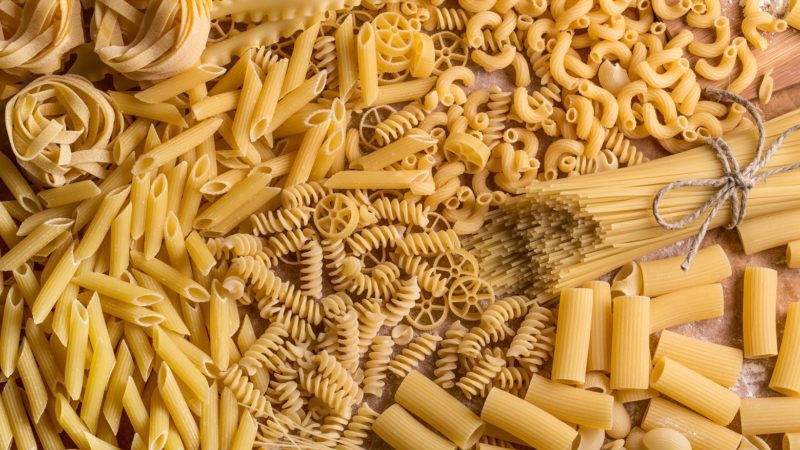
Pasta is present in the human diet as a side dish for main courses, as an addition to soup or casserole. They are made from durum wheat flour. To do this, sift the flour, mix with purified water and roll the resulting dough into a thin layer. After that, special knives cut the dough and send it to shape. In this way, many different types of this product are obtained: noodles, horns, spirals, spaghetti, etc.
Alcohol

A clear liquid with a pungent odor is used in many areas. Alcohol is used in the manufacture of alcoholic and cosmetic products, medicines and household chemicals.
The grain is sorted by size and cleaned of dust and various impurities. After that, the raw materials are boiled, thus freeing the starch for further stages of production. The resulting homogeneous mass is saccharified and subjected to the process of fermentation and distillation, after which the alcohol is purified and sorted into containers.
Read also:
Fertilizers for winter wheat: how to feed in the fall
Conclusion
The variety of cereals produced from wheat grains makes it possible to enrich the daily human diet. Common wheat flakes, semolina, arnautka, etc. are made from this grain crop. Do not forget about the cereals that came to us from other countries - bulgur and couscous. These foods are ideal for a healthy diet and have a beneficial effect on the body.